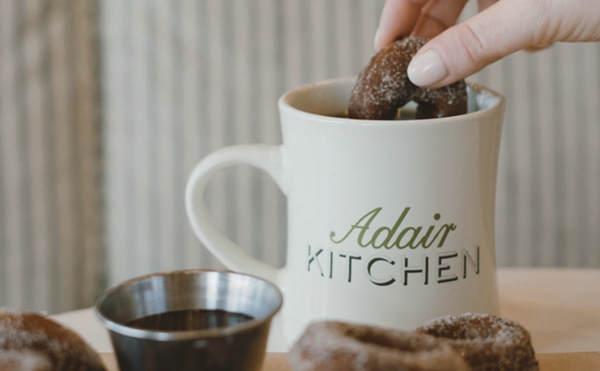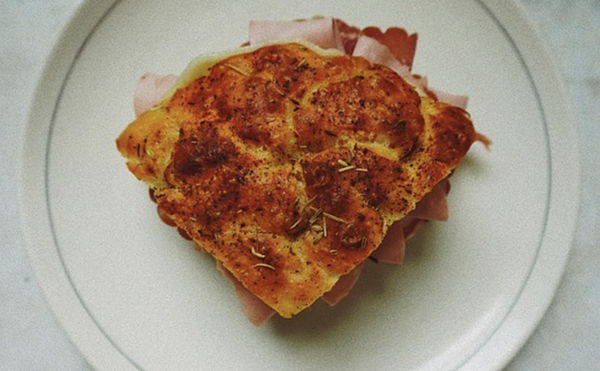Dear CBA,
I just heard something on the radio about fried Coke. That sounds 1) totally disgusting, and 2) kind of impossible. I would think that the Coke would dissipate into the grease, and you would basically have to drink the grease in order to drink the fried Coke. What am I missing here?
—Cola Curious
Dear CC,
Fried Coke is indeed a figment of our reality. Invented in Texas by a computer analyst named Abel Gonzales, it’s the newest hit at state fairs around the county. I’m no fraidy-cat when it comes to fried things. In fact most fried things I’ve eaten were quite pleasing to me. In addition to the standards, like fried fish or French fries, I’ve had fried Twinkies, fried Snickers, fried rice, fried ice cream, fried cow balls, and fried grasshoppers. But while some would go so far as to say it doesn’t matter what it is as long as it’s fried, I do find the idea of fried Coke disturbing.
Most of this sentiment comes from the fact that I’m disturbed by Coca-Cola, period, be it fried, sipped through a straw, or sloshing around an enema bag. Not only is it corrosive and fattening, Coca-Cola has an atrocious track record with its labor policies in South America and Africa, racking up numerous allegations of violent union-busting.
As far as how you make fried Coke: Well, basically, you soak some doughy material in Coca-Cola and then deep-fry it. Some people serve it with Coca-Cola syrup on top. It’s basically a Coke-flavored doughnut, chock-full of trans-fatty acids, high-fructose corn syrup, and the sweat, if not the blood, of Colombian bottling-plant workers.
Enjoy.
Dear CBA,
After three years of hunting, I finally bagged not one, but two whitetails. Now I’ve got them hanging in my garage in various states of deconstruction, and as I cut them up I’m not always sure how to label the parts, and how different parts of the animal taste, or how tender they are. Help!
— Well Hung and Uncut
Dear Hung,
Congratulations! In general, I find butchering to be pretty intuitive. It’s obvious where the different muscle groups end, so the first step is to separate them and clean them of silverskin and fat. The intact muscle groups that remain are called roasts. If you cut a roast across the grain, you get steaks. If you want to label them all properly or cut them in fancy ways, there are many books out there to help you. I particularly like Dressing and Cooking Wild Game (part of the Complete Hunter series from Creative Publishing of Minnetonka, Minnesota). It’s got all the information you need to skin, cut, and cook your deer — check out the Madeira-sauce recipe for your tenderloins — with great pictures and diagrams.
Or, just use the Force to guide you. Like I said, it’s intuitive. And whenever you come across a bit of flesh you aren’t sure about, simply fry it in the pan with a little oil, salt and pepper. Warning! If you have red wine around, you might feel compelled to drink some while you chew your meat. This combination will prove so satisfying that you might spend more time in the kitchen than in the garage, and soon you will have consumed too much wine to leave you in any condition to play with knives.
Hey Chefboy,
Have you ever smoked a whole duck? What kind of brine would you soak it in? How long should one smoke a full bird? Is there any way to avoid an overly dry duck?
— Smokin’ Quack
Dear Quack,
Unlike with butchering, as you may have read above, smoking meat is one of the culinary areas in which I like to use a recipe. The successful outcome of a smoking session depends on soaking the meat in a brine with the right level of salt.
For two wild ducks, mix 2 quarts of filtered water, 3/4 cup pickling salt, 1/2 cup brown sugar, 1/4 cup maple syrup, 1/4 cup white vinegar, and 1 tablespoon pickling spice in a big ceramic or glass bowl. Add the birds and put a plate on top to submerge them. If the ducks are too big, double the recipe for the brine. Let the birds soak for eight hours or overnight in the fridge. Then remove them from the brine, pat dry, and air-dry for half an hour.
Thanks to that salty brine, the ducks are already cured. All the smoking does is add flavor. So to cut down the prep time, just cold-smoke the ducks for three to four hours, and then finish them off in the oven at 350 degrees for about an hour.
If the ducks have their skin on, roast them uncovered. If they’ve been skinned, cover them with a piece of cheesecloth that’s been soaked in butter. That way, your bird won’t dry out.
If you’re hot-smoking, skip the oven part and just smoke your duck until it’s done.
A duck smoked like this is typically served cold. But I don’t think duck will ever taste better than when it’s fresh out of the oven or smoker, and eaten with fingers.















